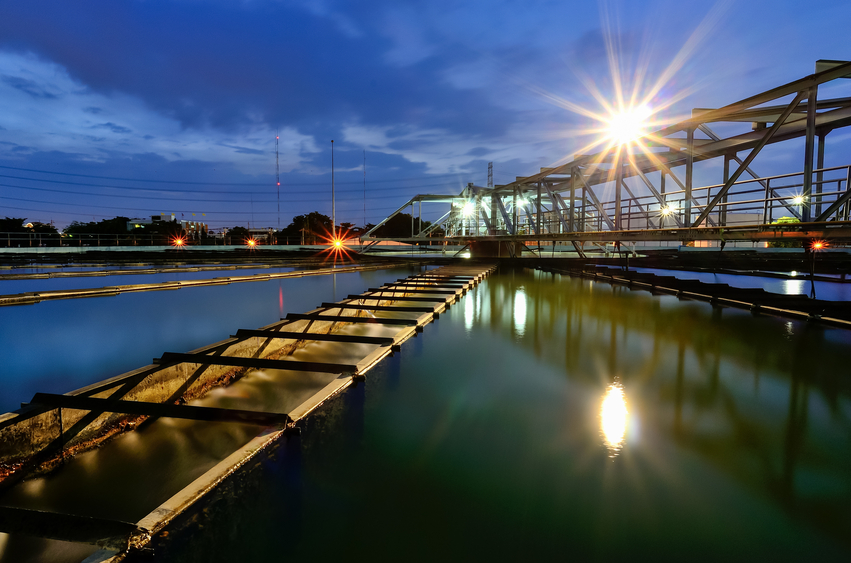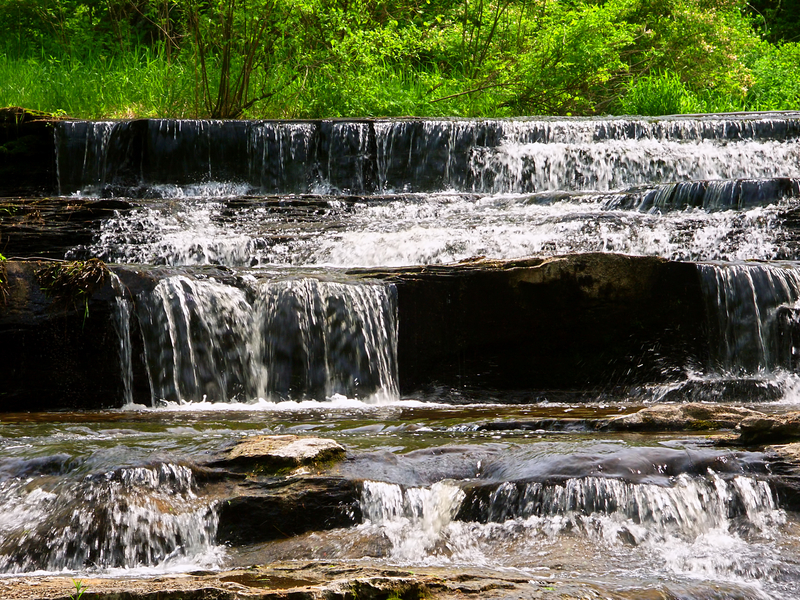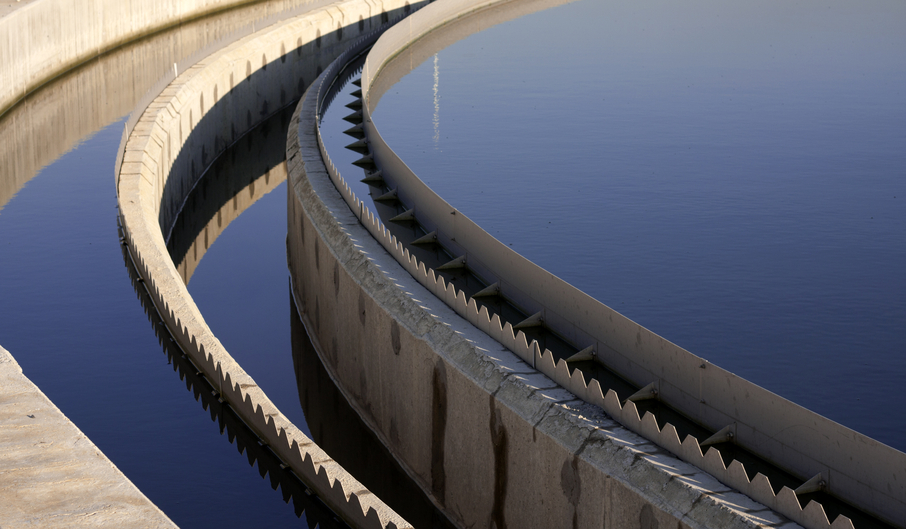Wastewater Engineering 15 PDH Discount Package 3
An Introduction to Domestic Wastewater Treatment (C02-029)
An Introduction to Hydraulic Design of Sewers (C02-031)
An Introduction to Secondary Wastewater Treatment (C04-022)
An Introduction to Wastewater Collection and Treatment in Cold Regions (C03-035)

This online engineering PDH course will introduce you to advanced wastewater treatment processes that provide higher quality wastewater discharge than achievable with primary and secondary treatment alone. You will learn about polishing ponds, post-aeration, microstraining, filtration, activated carbon adsorption, phosphorous removal, land application systems, nitrification, denitrification, three-stage biological systems, and anaerobic contact processes.
This 4 PDH online course is intended for civil, environmental and chemical engineers as well as construction professionals seeking an introduction to advanced wastewater treatment.
This PE continuing education course is intended to provide you with the following specific knowledge and skills:
- Learning about the sequence of wastewater treatment processes
- Learning typical application data for advanced wastewater treatment operations and processes
- Learning about polishing ponds
- Learning about post-aeration
- Learning about the microstraining process
- Learning the design factors to be used when using microstrainers
- Learning about hydraulic control of microscreening units
- Learning about the basic design parameters for filtration processes
- Learning about filtration media sizes and filtration rates
- Learning about multi-media filtration
- Learning about activated carbon adsorption
- Learning about pulsed bed activated carbon adsorption systems
- Learning about activated carbon quantities and adsorption capacity
- Learning acceptable hydraulic loadings for activated carbon adsorption processes
- Learning the chemical bases for phosphorus removal
- Learning about phosphorus removal by mineral addition using aluminum
- Learning about phosphorus removal by mineral addition using iron
- Learning about phosphorus removal using lime treatment
- Learning about land application systems
- Learning about nitrification and denitrification processes
In this professional engineering CEU course, you need to review the course document titled, "An Introduction to Advanced Wastewater Treatment".
Upon successful completion of the quiz, print your Certificate of Completion instantly. (Note: if you are paying by check or money order, you will be able to print it after we receive your payment.) For your convenience, we will also email it to you. Please note that you can log in to your account at any time to access and print your Certificate of Completion.

This online engineering PDH course will introduce you to the basics of domestic wastewater treatment. You will learn about preliminary measures, pretreatment, primary, secondary and advanced treatment processes, and sludge treatment and disposal. Approximate performance data for different treatment processes will be included, as well as comments on operational characteristics of processes. Basic design considerations for selecting treatment processes and sizing plants will be discussed. Normal domestic, non-domestic and industrial wastewater characteristics will be considered, as will the impact of stormwater on domestic wastewater treatment plants. Factors to be considered in site selection will be addressed.
This 2 PDH online course is intended for engineers and other design and construction professionals interested in gaining an understanding of the process technologies, equipment and design practices needed to treat domestic wastewater and treat and dispose of the resultant sludge.
This PE continuing education course is intended to provide you with the following specific knowledge and skills:
- Learning the design and operational objectives of domestic wastewater treatment plants
- Learning about the major factors to consider in siting domestic wastewater treatment plants, including topography, availability of a suitable discharge point, working and public areas, and community master plan considerations
- Learning about typical compounds that inhibit biological wastewater treatment processes and how they can be mitigated
- Learning the definitions and characteristics of preliminary, primary, secondary and advanced domestic wastewater treatment processes
- Learning about preliminary treatment processes including equalization, neutralization, temperature adjustment, nutrient addition, screening and grit removal
- Learning about primary treatment processes including sedimentation and dissolved air flotation
- Learning about secondary treatment processes including activated sludge, aerated ponds, aerobic-anaerobic ponds, trickling filters, chemical oxidation, chemical mixing flocculation and clarification, gravity filtration, pressure filtration, dissolved air flotation with chemicals, and anaerobic contact
- Learning about advanced treatment processes including advanced carbon adsorption, micro straining filtration, land treatment, subsurface disposal, and groundwater recharge
- Learning about sludge treatment processes including anaerobic digestion, aerobic digestion, autoclaving, elutriation, vacuum filtration, centrifugation, sand beds and presses
- Learning about sludge disposal including incineration, wet oxidation, land disposal and sanitary landfills
In this professional engineering CEU course, you need to review the course document titled, "An Introduction to Domestic Wastewater Treatment".
Upon successful completion of the quiz, print your Certificate of Completion instantly. (Note: if you are paying by check or money order, you will be able to print it after we receive your payment.) For your convenience, we will also email it to you. Please note that you can log in to your account at any time to access and print your Certificate of Completion.

This online engineering PDH course will introduce you to the principles of hydraulic design of sanitary sewers. You will learn how to calculate quantities of wastewater, the approach to design of gravity and depressed sewers, required pumping capacity, hydrogen sulfide gas control, and sewer system features such as manholes, building connections, cleanouts, and pumping stations and equipment.
This 2 PDH online course is applicable to civil engineers and construction professionals seeking to understand the fundamentals of design of sewer systems. This course will provide civil engineers and construction professional an introduction to the terminology, fundamentals and methodologies for the hydraulic design of sanitary sewer systems.
This PE continuing education course is intended to provide you with the following specific knowledge and skills:
- Learning how to evaluate the contributing population for the sewer system
- Learning about Average Daily Flow, Average Hourly Flowrate, Peak Diurnal Flowrate, and Extreme Peak Flowrate
- Learning how to calculate extreme peak flowrates from average flowrates
- Learning how to accommodate groundwater infiltration into the sewer system when designing the sewer system
- Learning how the Manning formula is used in design of gravity sewers
- Learning about acceptable values for the roughness coefficient in the Manning formula
- Learn about acceptable design velocities for gravity sewers
- Learning the 10 parameters that need to be identified and quantified after a preliminary layout for the system has been established
- Learning the importance of critical flow in gravity sewer design
- Learning about velocity and flow analysis of depressed sewers
In this professional engineering CEU course, you need to review the course document titled, "An Introduction to Hydraulic Design of Sewers".
Upon successful completion of the quiz, print your Certificate of Completion instantly. (Note: if you are paying by check or money order, you will be able to print it after we receive your payment.) For your convenience, we will also email it to you. Please note that you can log in to your account at any time to access and print your Certificate of Completion.

This online engineering PDH course will introduce you to processes and equipment for secondary treatment of wastewater. You will be introduced to descriptions, functions and design considerations for trickling filter plants, activated sludge plants, and wastewater treatment ponds. You will be introduced to special considerations for wastewater treatment plants in hot and cold climates. You will learn how the secondary treatment processes work together with the preliminary, primary, tertiary and sludge handling processes to form a complete wastewater treatment plant.
Wastewater treatment is usually characterized as consisting of four sequential processes: preliminary, primary, secondary and tertiary treatment.
This 4 PDH online course is intended for civil, environmental and chemical engineers as well as construction professionals seeking an introduction to secondary wastewater treatment.
This PE continuing education course is intended to provide you with the following specific knowledge and skills:
- Understanding design basis and criteria for trickling filter plants
- Learning about the different dosing intervals for different classifications of trickling filters
- Learning about the biochemical oxygen demand (BOD) efficiency of different classifications of trickling filters
- Learn how recirculation increases BOD removal efficiency in high rate trickling filter processes
- Understanding the four common flow diagrams for single-stage and two-stage trickling filter plants
- Understanding why loading rate is the key design factor whether the surface application is continuous, intermittent, constant or varying rate
- Understanding the importance of ventilation in providing aerobic conditions for effective treatment
- Understanding how performance of trickling filters will be affected by temperature changes in the wastewater and filter films
- Learning about design formulas for determining BOD removal efficiencies for single- and two-stage trickling filters
- Understanding the purpose of secondary sedimentation tanks
- Learn about the conventional plug-flow, step aeration, contact stabilization, and completely-mixed activated sludge processes
- Learning about the closed-loop reactor (oxidation ditch) extended aeration process
- Learning about the classifications of wastewater treatment ponds
- Learning about shallow and aerated aerobic ponds
- Learning about aerobic-anaerobic and facultative wastewater treatment ponds
In this professional engineering CEU course, you need to review the course document titled, "An Introduction to Secondary Wastewater Treatment".
Upon successful completion of the quiz, print your Certificate of Completion instantly. (Note: if you are paying by check or money order, you will be able to print it after we receive your payment.) For your convenience, we will also email it to you. Please note that you can log in to your account at any time to access and print your Certificate of Completion.

This online engineering PDH course will introduce you to the unique aspects of design and construction of wastewater collection and treatment systems in the arctic and subarctic regions. In addition to gravity collection systems, some detail is included on the use of pressure and vacuum sewers since the flat terrain and permafrost make it difficult to design a conventional gravity sewer system in the
Wastewater characteristics for treatment purposes in the cold regions will generally be different from those in temperate regions, with respect to quantity, quality, and temperature. The total quantity of wastewater discharged at installations in cold regions tends to be very close to the quantity supplied for potable water use since there is little external or industrial use, storm water is usually excluded, and groundwater infiltration is not a factor in the newer insulated and tightly sealed pipe systems. As a result wastewater in the
This 3 PDH online course is intended for civil, environmental and mechanical engineers and other design and construction professionals interested to learn about wastewater collection and treatment systems, facilities and equipment in arctic and subarctic regions.
This PE continuing education course is intended to provide you with the following specific knowledge and skills:
- Learning about temperature considerations in wastewater collection systems in cold regions
- Understanding how low temperature affects wastewater treatment processes
- Learning about special design details recommended for features such as manholes, cleanouts, service connections and pumping stations
- Learning how to employ pressure and vacuum sewerage systems in cold regions
- Understanding how cold temperatures affect preliminary treatment processes such as facultative lagoons
- Learning about design considerations when designing aeration systems in cold regions
- Learning about sludge management in Arctic and Subarctic regions
In this professional engineering CEU course, you need to review the course document titled, "An Introduction to Wastewater Collection and Treatment in Cold Regions".
Upon successful completion of the quiz, print your Certificate of Completion instantly. (Note: if you are paying by check or money order, you will be able to print it after we receive your payment.) For your convenience, we will also email it to you. Please note that you can log in to your account at any time to access and print your Certificate of Completion.